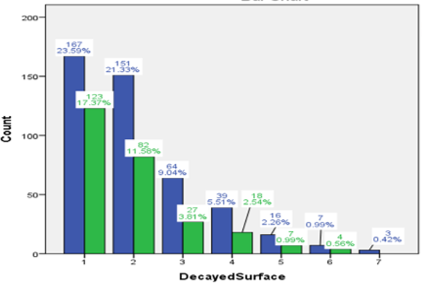Abstract
Dr Greene Vardiman Black in the year 1896 classified dental caries into VI classes based on the site of occurrence, among which class III and class IV are exclusively associated with anterior teeth. There are very minimal studies in the literature emphasising on the prevalence of dental caries in the anterior teeth region. Caries involving the anterior teeth significantly affects aesthetics and which in turn affects the confidence levels of the affected person. Grossly decayed anterior teeth also affect phonetics and mastication. The aim of this study was to determine the prevalence and gender variations of class III dental caries among patients who have visited Saveetha Dental College and have undergone treatment for the same. A Retrospective study was conducted, and data collection was done from dental archives pertaining from June 2019 to April 2020. Data consisted of all the patients who underwent therapeutic procedures for class all dental caries. Data was imported to IBM SPSS Version 20 for statistical analysis. Results were tabulated. Prevalence of class III dental caries was more among females as compared to males. Maxillary anterior are more affected than mandibular anterior. Prevalence was more among patients belonging to the third and fourth decade of life. There was a statistically significant association between age, and proximal surface –majority of mesial caries decreases with age and distal caries increases with age. As the age increases, the number of decayed surfaces increases (not statistically significant). This study was conducted in a single centre. Extensive multi-centre studies need to be done.
Full text article
Authors

This work is licensed under a Creative Commons Attribution-NonCommercial-NoDerivatives 4.0 International License.

